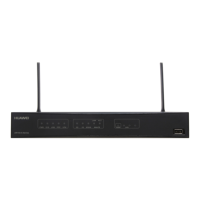By default, the information center is enabled.
----End
2.3.3 (Optional) Naming an Information Channel
Naming an information channel helps clarify what is output by each channel.
Procedure
Step 1 Run:
system-view
The system view is displayed.
Step 2 Run:
info-center channel channel-number name channel-name
A channel is named.
----End
2.3.4 (Optional) Configuring the Function of Filtering Logs by IDs
The binary log function can filter specific logs.
Context
Binary logs provide the function of filtering specified logs by their IDs. To filter certain logs,
the user can obtain IDs of these logs through log resolution tools and add these IDs to the log
filtering list.
After that, the information center does not send these logs in each output direction.
Procedure
Step 1 Run:
system-view
The system view is displayed.
Step 2 Run:
info-center filter-id { id | bymodule-alias modname alias }
*
&<1-50>
One or more IDs are added and a space is used to separate these IDs.
NOTE
Currently, only 50 IDs can be shielded. The aggregation of these shielded IDs is called a log ID filtering
list. The log ID filtering list is arranged by ID values.
----End
2.3.5 (Optional) Configuring the Function of Generating a Data
Dictionary
To resolve log files on the log server, transform binary logs into text logs through the data
dictionary.
Huawei AR150&200 Series Enterprise Routers
Configuration Guide - Device Management 2 Information Center Configuration
Issue 02 (2012-03-30) Huawei Proprietary and Confidential
Copyright © Huawei Technologies Co., Ltd.
14

